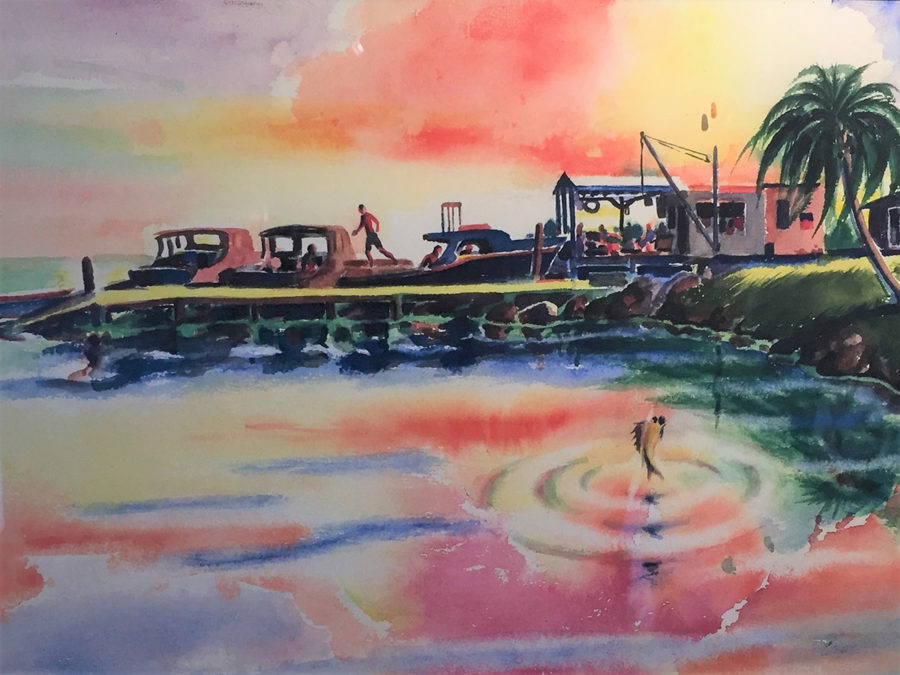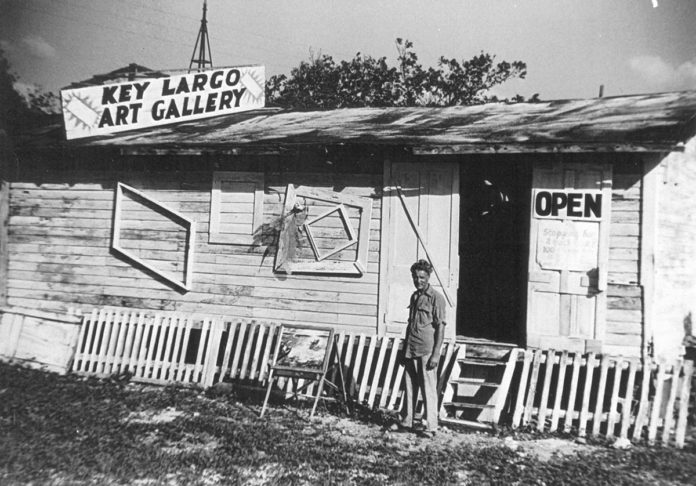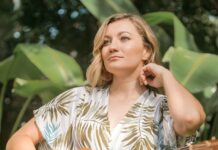This is the second in a two-part series on the Hermit Artist of Key Largo.
It seemed that Harry Sonntag, the Hermit Artist of Key Largo, found his peace when he arrived on Key Largo. In 1952, Sonntag strolled into the office at the Key West Citizen and told his story to reporters. The impression he left behind was that “he has found greater happiness and satisfaction than he has ever known.” According to the newspaper story, Harry planned to “stop his wanderings.”
When his Manhattan studio went up in flames, reportedly taking all his art with it, Sonntag left New York and hitchhiked down to the Florida Keys. In the late 1940s, circa 1949, he found a picturesque piece of oceanfront Key Largo property, set up camp, and built a shack from driftwood and tar paper. It overlooked a clear Atlantic cove where Harry bathed, fished, and soaked up the lights and colors of the sub-tropical mornings and sunsets. Sonntag used his watercolors to capture what he saw.
At first, he displayed his growing collection on the walls of his oceanside shack, but as his collection of watercolors grew, his desire to show them outgrew the wall space of his tarpaper shack. Just up the highway a bit, in the area of MM 99, there was an abandoned fruit packing house.
Back when Flagler’s train was still steaming up and down the island chain, farmers brought their produce to packing houses built near the train’s right-of-way so that it could be crated, loaded into train cars and shipped to northern markets. The 1935 Labor Day Hurricane put an end to train service in the Florida Keys and, apparently, the usefulness of the packing house that once stood at MM 99.
By the time Sonntag arrived in the Florida Keys, the structure had fallen into disrepair. He approached the building’s owner and asked what he thought about the space being used as an art gallery. The owner either thought it was a great idea, or he could not have cared less. Either way, he agreed to let Sonntag use the old packing house free of charge.
Sonntag’s Key Largo Art Gallery opened in 1951 and was advertised with two roadside signs. The hand- painted sign that read “Open” appeared at the front door when Harry was at the gallery. The second hand-painted sign read “Key Largo Art Gallery” and was displayed atop the old wooden roof of the packing house in hopes of capturing the eyes of passing motorists.
Hours of operation were at the discretion of the artist. While Sonntag sold his work roadside, the paintings did not come with roadside prices and were not subject to negotiations. His original watercolors sold for between $55 and $65 each. Roadside patrons pitching lowball offers were ignored.

And then, for the second time in his career, the Harry Sonntag Collection was allegedly lost in a fire. The May 26, 1955, headline of the Homestead News read: “Famous Art Gallery Destroyed by Fire Sunday.” The story reported that Sonntag left the building at about 7 p.m. Friday. The entire contents of the structure, including his paintings, were destroyed. Shortly after that, the Hermit Artist of Key Largo disappeared from the Florida Keys.
Sonntag passed away in St. Petersburg, Florida, just a year before his collection was rediscovered in 1992. Frank McNall happened to be driving past a Kissimmee storage unit when he stopped to talk with a woman clearing out one of the units. He bought a couple of items from her, and before he drove away in his truck, she said, “You can take this old bag of art my husband and I found on St. Thomas if you want.”
The old bag of art was saved twice that day. Later that afternoon, Frank’s friend Chuck Faulkner was visiting and suggested that Frank get the bag out of his truck in case it started to rain. A Florida afternoon deluge poured down an hour later. Thankfully, the bag filled with the lost collection of Harry Sonntag, including 170 original watercolors, photographs and newspaper articles that would have been otherwise destroyed in the shower and likely tossed into a Dumpster, was moved inside.
Faulkner has worked to keep the Harry Sonntag Collection intact for three decades. He has always believed that the collection would become something lesser if it was sold off one painting at a time, and, for the last 30 years, Chuck has worked to keep the collection whole. The collection has not lived in the Florida Keys since 1955 and deserves to come home to stay.
Patrons interested in this one-of-a-kind Florida Keys treasure can contact me at 305-395-9889 or whypanic@aol.com. For more information about Harry and his art, visit www.harrysonntag.com.























